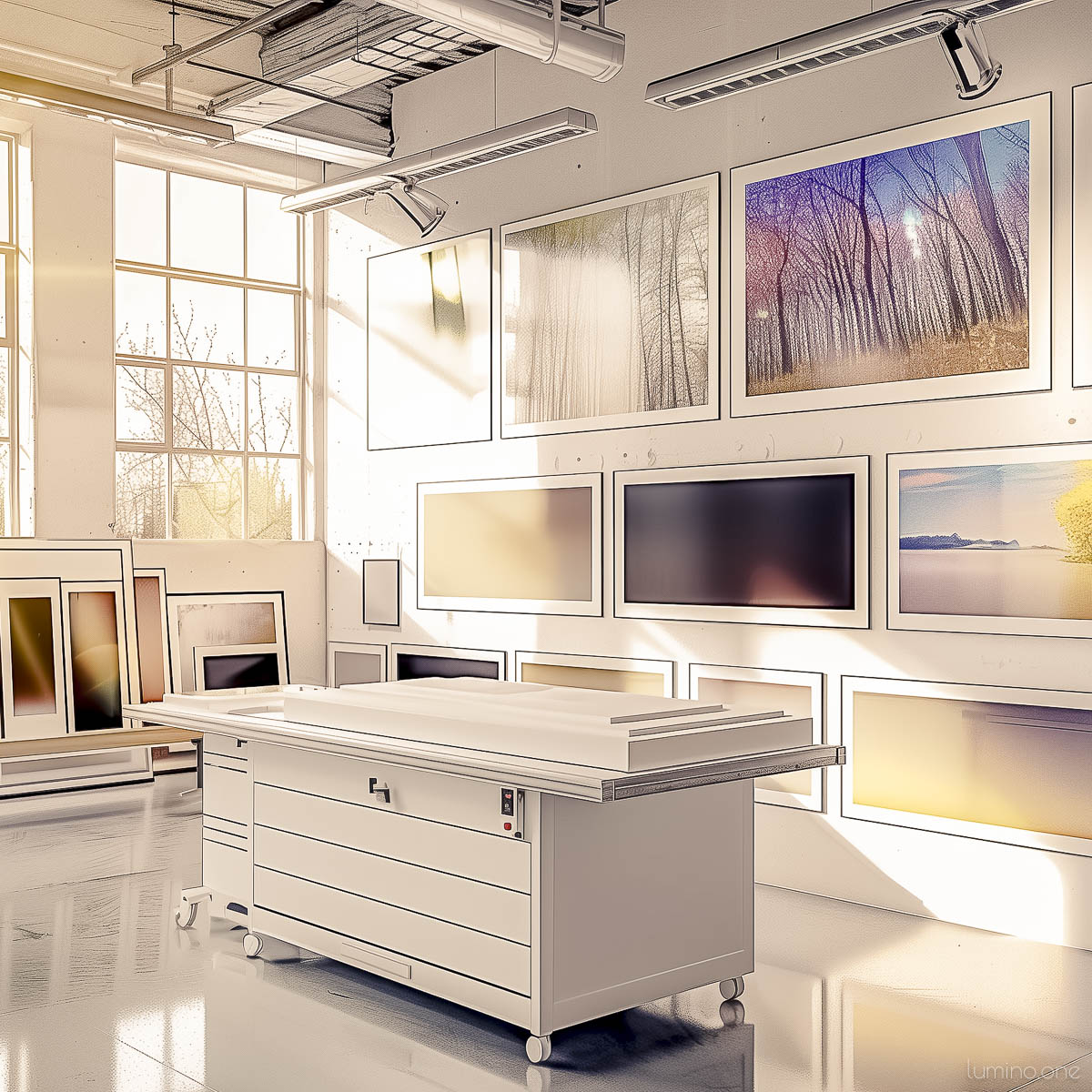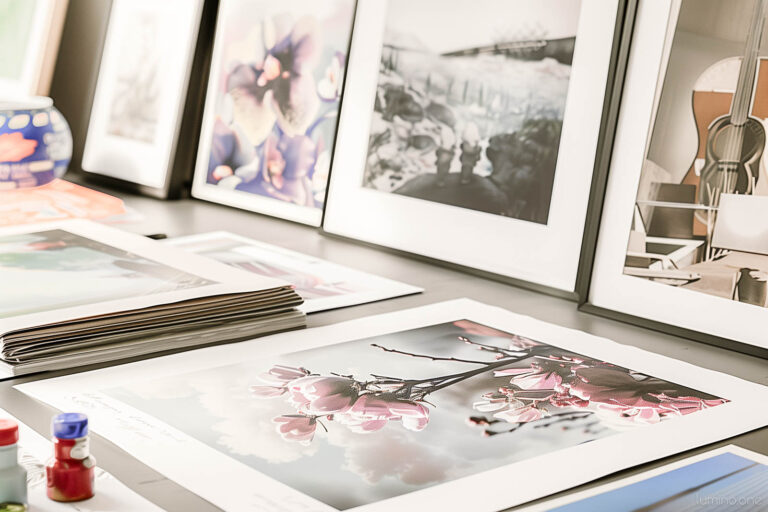In the diverse world of art prints, two terms frequently emerge, sparking curiosity and sometimes confusion among art enthusiasts and collectors alike: lithograph and giclee prints. While both forms of art reproduction hold significant value and appeal in their own right, they stem from vastly different processes, histories, and materials, leading to unique outcomes that cater to varied tastes and preferences. This blog post aims to demystify these two popular types of art prints, delving into their definitions, the nuances that set them apart, and the factors that influence their value in the art market.
Key Differences: Lithographs are traditional prints made using a manual process that involves drawing on limestone or metal plates, offering texture and depth. Giclee prints are produced using inkjet printing technology, known for high precision and color accuracy.
Table of Contents:
- Understanding the Basics of Lithograph and Giclee Printing Process
- Which is More Valuable: Giclee or Lithograph?
- Differences Between Lithographs and Serigraphs
- Value Comparison: Lithographs, Serigraphs, and Giclee Prints in the Art Market
- Are Giclee Prints Popular and Widely Accepted?
- Are Giclee and Lithograph Prints Archival?
- Is Lithograph Printing a Faster Process?
- The Cons of Giclee Prints
Understanding the Basics of Lithograph and Giclee Printing Process
For art collectors, interior designers, and enthusiasts alike, the distinction between lithograph and giclee prints is not just academic—it’s essential for making informed decisions about art acquisitions. Let’s delve into the definitions, histories, and evolutions of these two popular printing methods, breaking down complex concepts into simple, digestible insights.
Definition of Lithograph Print
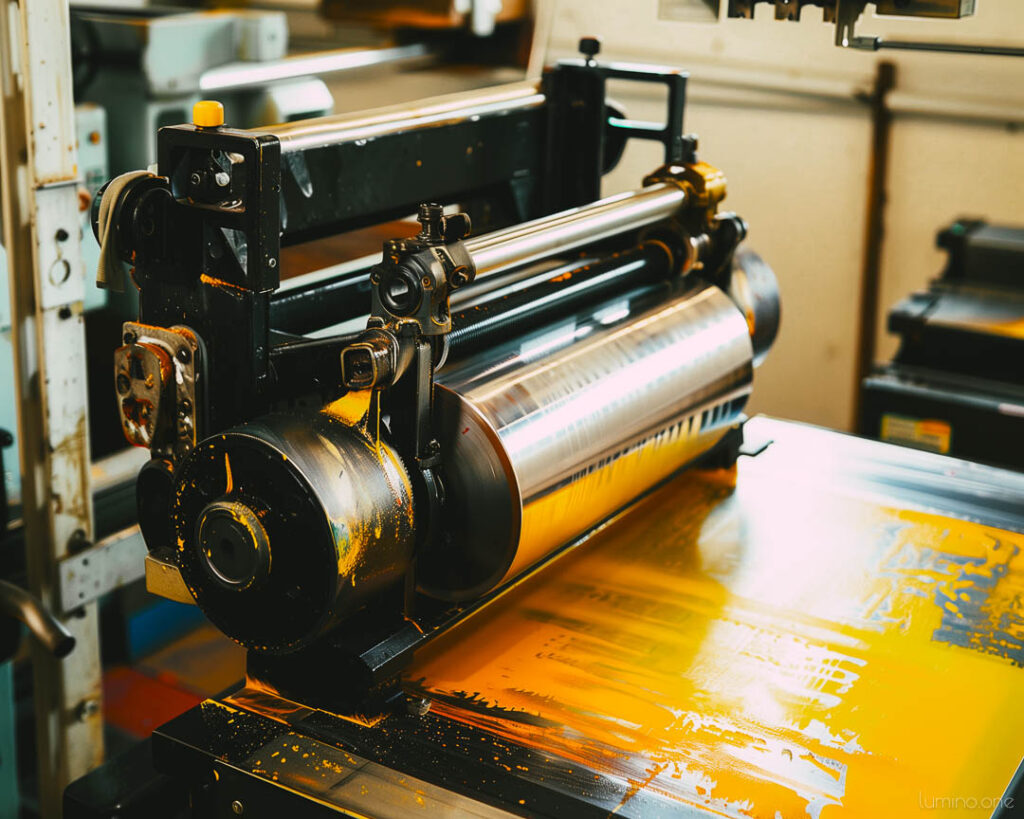
Lithography is a traditional printing technique that dates back to the late 18th century. It involves:
- Creating an image on a flat surface (usually limestone or a metal plate) with a grease-based medium.
- The surface is then treated with a mixture of acid and gum arabic, ensuring that the ink only adheres to the original drawing area.
- When the plate is pressed onto paper, the image is transferred, resulting in a high-quality print.
Lithographs are known for their:
- Richness of color and depth of detail, closely resembling the artist’s original intent.
- Ability to produce large editions of prints, making art more accessible to a broader audience.
Definition of Giclee Print
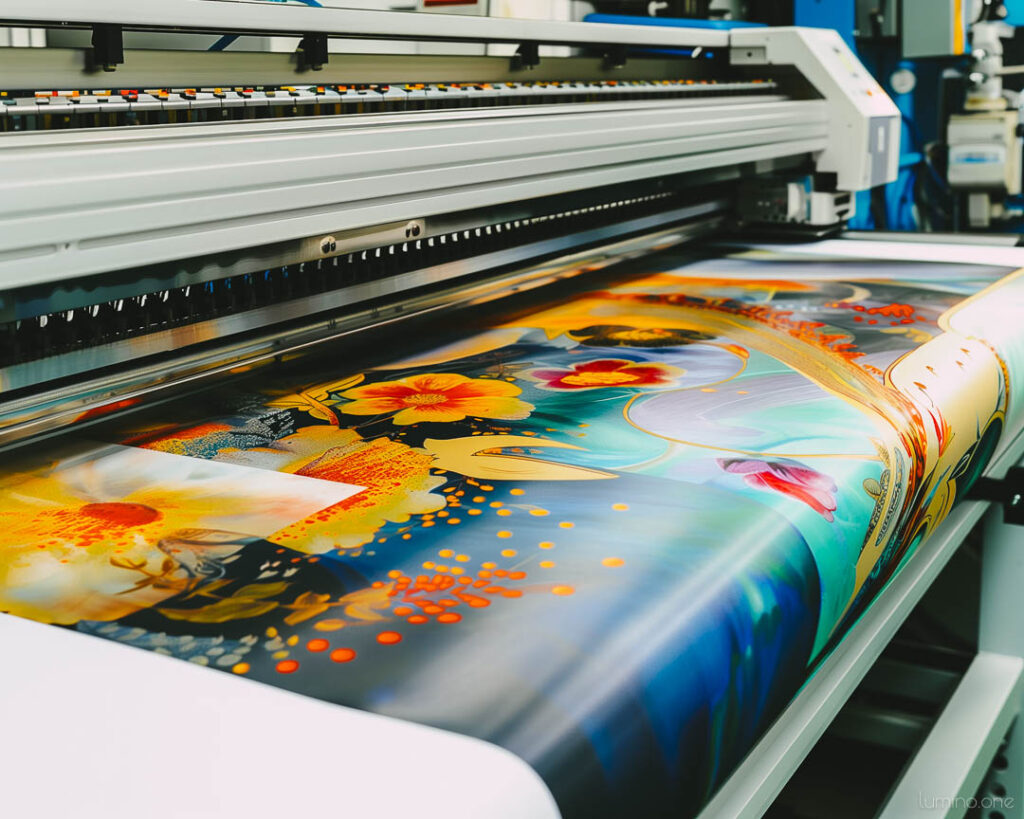
Giclee (pronounced “zhee-clay”) is a newer form of art reproduction that emerged in the late 20th century, leveraging advancements in digital printing technology. It involves:
- Spraying microscopic droplets of pigment-based ink onto high-quality paper or canvas.
- Utilizing digital scans of original artwork to produce prints with exceptional detail and color accuracy.
Giclee prints are celebrated for their:
- Incredible precision and vibrant colors, capable of capturing subtle nuances in the original artwork.
- Durability and longevity, with archival quality inks and substrates that resist fading over time.
Brief History and Evolution of Both Printing Methods
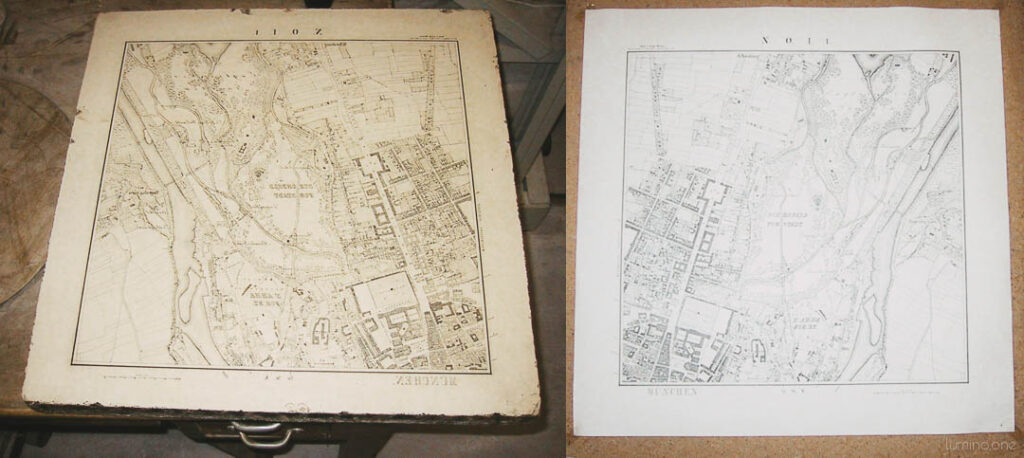
- Lithography was invented in 1796 by Alois Senefelder as a cost-effective method of reproducing theatrical works. It quickly gained popularity among artists for its ability to produce high-quality, accessible art prints.
- Modern lithographic printing is called offset printing where the inked image is transferred (or “offset”) from a plate to a rubber blanket and then to the printing surface.
- Giclee printing, on the other hand, is a product of the digital age. The term was coined in 1991 to describe the process of making fine art prints from a digital source using inkjet printing technology.
Key Points to Remember
- Lithographs and giclee prints offer different advantages: lithographs for their traditional charm and giclee prints for their modern precision.
- When considering a purchase, think about the aesthetic qualities you value in art, as well as the longevity and historical significance of the print.
Which is More Valuable: Giclee or Lithograph?
In the nuanced world of art collection, understanding the value of different types of prints is crucial. Both giclee and lithograph prints hold a special place in the hearts of art collectors, interior designers, and enthusiasts. But when it comes to determining which is more valuable, several factors come into play. Let’s explore these considerations and compare the value of giclee and lithograph prints in the art market.
Value depends on factors like the artist’s reputation, edition size, and material quality.
Factors That Affect the Value of Art Prints
- Authenticity and Edition Size: Limited edition prints, signed and numbered by the artist, often hold more value due to their scarcity.
- Artist’s Reputation: Works by renowned or rising artists are likely to appreciate over time.
- Quality and Condition: The materials used and the print’s preservation state can significantly impact its value.
- Historical Significance: Prints with a story or historical context can be more desirable to collectors.
Comparison of Giclee and Lithograph in the Art Market
- Giclee Prints: Known for their high-quality reproduction and longevity, giclee prints are favored for modern works and digital art. Their value is influenced by:
- The technology used to produce them, allowing for precise color matching and detail.
- The archival quality of the inks and substrates, ensuring the print lasts without fading.
- However, because giclee prints can be reproduced in large quantities, their value might not be as high as lithographs unless they are part of a limited edition.
- Lithograph Prints: These prints are cherished for their craftsmanship and the unique qualities each print possesses due to the traditional printing process. Their value comes from:
- The artist’s direct involvement in the creation of the plates or stones.
- The technique’s historical roots, offering a tangible connection to the past.
- Limited editions and older lithographs, especially those signed by the artist, can be highly valuable in the art market.
Differences Between Lithographs and Serigraphs
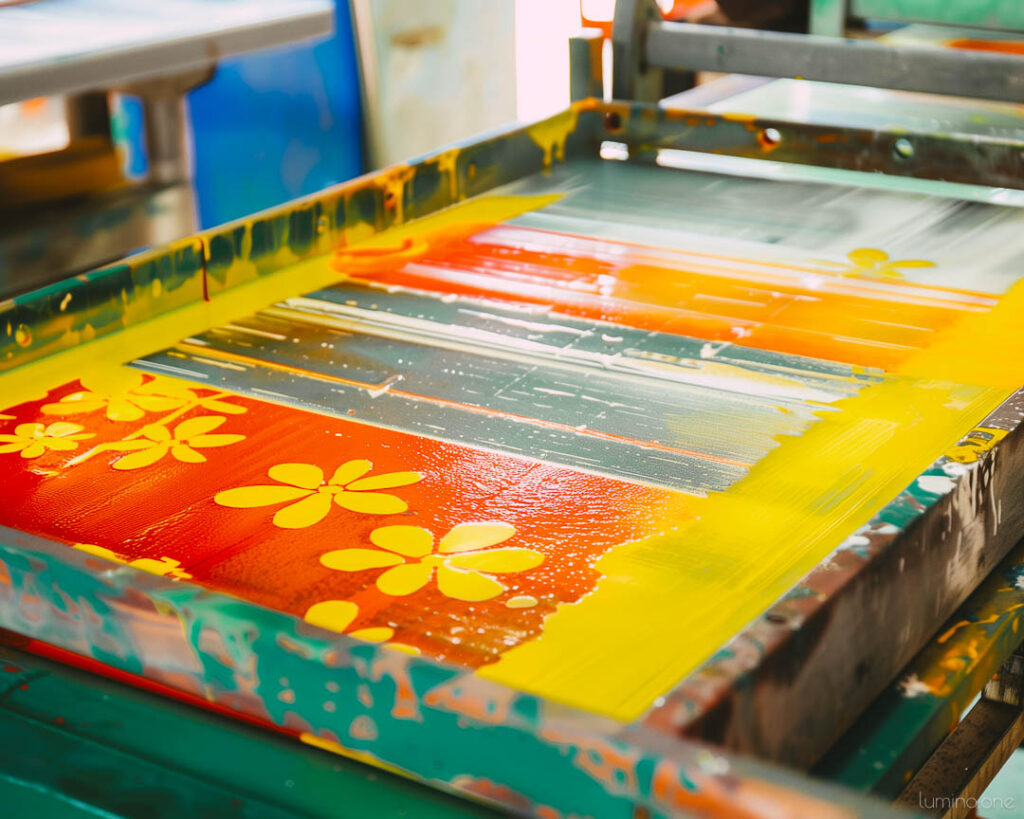
In the vibrant world of art collecting, understanding the nuances between different printing techniques is crucial. Two popular methods, lithographs and serigraphs, often appear side by side in galleries and collections, each boasting unique qualities and processes. Let’s delve into the detailed comparison of these two art forms, exploring their production processes, visual and material differences, and typical uses in the art world.
Lithographs use a chemical process on limestone or metal plates to create prints, offering subtle color gradations. Serigraphs (screen prints) use stencils to apply layers of ink on fabric, resulting in bold, vibrant colors.
Production Processes
- Lithographs:
- Creation: The artist draws directly onto a limestone block or metal plate with a grease-based medium.
- Processing: The surface is treated to ensure that only the drawn area accepts ink.
- Printing: The inked surface is pressed onto paper, transferring the image.
- Serigraphs (Screen Printing):
- Stencil Preparation: A stencil is created for each color layer of the artwork, often using a fine mesh screen.
- Ink Application: Ink is pushed through the stencils onto the substrate, one color at a time.
- Layering: Multiple layers are applied to achieve the final image, requiring precise alignment.
Visual and Material Differences
- Texture and Appearance:
- Lithographs often have a softer, more painterly appearance, with subtle gradations in tone and color.
- Serigraphs feature bold, vibrant colors with clear boundaries between color areas, thanks to the layering of inks.
- Materials:
- Lithography uses a wide range of papers and inks, allowing for variations in texture and finish.
- Serigraphy can be performed on various substrates, including textiles and metals, not limited to paper.
Typical Uses and Applications
- Lithographs are favored for:
- Fine art reproductions where subtlety of tone and depth are desired.
- Original artist prints, due to the direct involvement of the artist in the creation process.
- Serigraphs are chosen for:
- Graphic designs, posters, and artworks requiring intense, saturated colors.
- Limited edition art prints, where each layer adds to the uniqueness of the piece.
Rules of Thumb and Examples:
- When considering a purchase, remember that lithographs might appeal more to those who appreciate the nuances of traditional printmaking and the gentle interplay of colors and textures.
- Serigraphs may attract collectors looking for striking visual impact, durability, and versatility in display options.
Example: A lithograph by Henri Matisse, with its subtle color transitions, offers a different aesthetic and collector appeal compared to a bold, graphic serigraph by Andy Warhol, known for his vibrant, pop art screen prints.
Value Comparison: Lithographs, Serigraphs, and Giclee Prints in the Art Market
The art market is a complex arena where the value of a piece intertwines with its aesthetic allure, the rarity of the edition, and the intricacies of its creation method. Lithographs and serigraphs have long been celebrated for their unique beauty and the craftsmanship they require. However, the emergence of giclee prints has introduced a modern contender to the traditional favorites. Let’s delve into how these three printing methods compare in terms of value.
In the art market, lithographs and serigraphs often carry a premium due to their traditional, labor-intensive creation processes. Giclee prints, known for their high fidelity and color accuracy, are generally more accessible.
Understanding the Value Factors
Several key elements influence the market value of art prints:
- Rarity and Edition Size: The exclusivity of a print, often determined by its edition size, significantly impacts its value. Limited editions across all three methods—lithographs, serigraphs, and giclee—are prized for their scarcity.
- Artist’s Signature: A signature from the artist not only authenticates a print but also elevates its desirability and market value.
- Creation Process: The traditional techniques of lithography and serigraphy, which require considerable skill and labor, often result in higher valuations compared to the more technologically driven giclee process.
- Material and Archival Quality: Prints made with high-quality, lasting materials are more likely to retain or increase their value over time.
Comparative Insights
- Lithographs: The value of lithographs is often rooted in the artist’s renown and the piece’s historical context. For example, lithographs by Pablo Picasso or Marc Chagall, particularly signed and limited editions, are highly sought after and command top dollar in the art market.
- Serigraphs: Known for their vibrant colors and bold designs, serigraphs by artists like Andy Warhol are valued for their iconic status and the graphic appeal they bring to any collection. The manual process of screen printing adds to their allure and value.
- Giclee Prints: Giclee printing, with its ability to closely replicate original artworks, offers a modern alternative that has gained acceptance and value, especially when associated with contemporary artists. While giclee prints are generally more accessible, limited editions by in-demand artists can be quite valuable, bridging the gap between traditional and digital art forms.
Making the Choice
Deciding on the most valuable type of print depends on a blend of factors, including the artist’s prominence, the artwork’s rarity, and its aesthetic and historical significance. Traditional methods like lithography and serigraphy carry a certain prestige due to their detailed, hands-on processes, often making them more valuable to collectors who appreciate the artistry involved. Meanwhile, giclee prints have carved out their niche, offering remarkable quality and accessibility, with potential for significant value when linked to notable contemporary artists.
For collectors, the decision often reflects a balance between personal taste and investment potential. Whether you’re captivated by the tactile depth of a lithograph, the striking vibrancy of a serigraph, or the meticulous detail of a giclee print, each method provides a unique window into the diverse world of art.
Are Giclee Prints Popular and Widely Accepted?
In the ever-evolving world of art collection and interior design, the emergence of giclee prints has sparked both interest and debate. Once considered a newcomer in the realm of art reproduction, giclee printing has rapidly gained ground. Let’s explore the journey of giclee prints towards popularity and acceptance, comparing them with traditional printing methods along the way.
Giclee prints are popular and widely accepted, especially for their ability to accurately reproduce artwork with high-quality inks and materials.
The Rise in Popularity of Giclee Prints
Giclee prints have seen a remarkable rise in popularity over the past few decades, thanks to their exceptional quality and versatility. Here are a few reasons behind their growing appeal:
- High-Quality Reproduction: Giclee printing offers unparalleled color accuracy and detail, making it possible to closely replicate original artworks.
- Durability: Using archival-quality inks and substrates, giclee prints are known for their longevity, resisting fading and degradation over time.
- Accessibility: The digital nature of giclee printing allows artists to offer high-quality reproductions of their work without the high costs associated with traditional printmaking methods.
Acceptance of Giclee Prints in Galleries and Among Collectors
Giclee prints have not only found a place in the homes of art lovers but have also made their way into galleries and prestigious art collections. This acceptance can be attributed to:
- Flexibility in Sizes and Editions: Artists can produce giclee prints in various sizes and limited editions, catering to a wide range of collectors.
- Recognition of Digital Art: As digital art becomes more prevalent, giclee prints are increasingly recognized as a legitimate medium for contemporary artworks.
- Gallery Exhibitions: Many galleries now host exhibitions featuring giclee prints, acknowledging their quality and potential as collectible pieces.
Comparison with Traditional Printing Methods in Terms of Popularity
While giclee prints continue to rise in popularity, it’s important to consider how they stack up against traditional methods like lithography and serigraphy:
- Traditional Charm vs. Modern Precision: Traditional prints are often valued for their historical significance and the tactile qualities of their production. Giclee prints, however, offer modern precision and flexibility, appealing to a different set of collectors.
- Market Trends: The art market is increasingly embracing digital techniques, with giclee prints becoming a popular choice for both emerging and established artists.
- Collector Preferences: Some collectors prefer the unique qualities of traditional prints, while others are drawn to the crisp detail and color fidelity of giclee prints.
Rules of Thumb and Examples:
- When considering adding a giclee print to your collection, look for works by artists who specialize in digital mediums or those who offer limited edition giclee prints as part of their portfolio.
- Galleries like the Museum of Modern Art (MoMA) and the Guggenheim have included giclee prints in their collections and exhibitions, signaling broad acceptance in the art world.
In conclusion, giclee prints have undoubtedly carved out their niche in the art community, celebrated for their high fidelity and versatility. As technology continues to advance and the appreciation for digital art grows, giclee prints are set to remain a popular and widely accepted choice among art collectors, interior designers, and enthusiasts alike. Whether juxtaposed with traditional prints or standing alone, giclee prints offer a modern approach to art collection that resonates with the contemporary collector.
Are Giclee and Lithograph Prints Archival?
In the world of art collecting, the term “archival” is often a key consideration, especially when assessing the longevity and durability of prints. Whether you’re a seasoned collector, an interior designer curating spaces, or an art lover expanding your personal gallery, understanding what makes a print archival is crucial. Let’s explore the archival nature of giclee and lithograph prints and share some tips on how to preserve and care for these artworks.
Both giclee and lithograph prints can be archival, depending on the quality of inks, paper, and production processes used. Archival prints are designed to resist fading and deterioration over time.
What Makes a Print Archival?
At its core, an archival print is designed to resist the elements that typically cause deterioration—such as light exposure, humidity, and temperature fluctuations. Several factors contribute to a print’s archival quality:
- Ink Quality: Archival prints use pigment-based inks, known for their long-lasting properties, as opposed to dye-based inks that fade more quickly.
- Paper or Canvas Quality: Acid-free and lignin-free substrates are essential for preventing yellowing and degradation over time.
- Proper Handling and Framing: The way a print is handled, mounted, and framed can significantly impact its longevity.
Lifespan and Durability of Giclee vs. Lithograph Prints
- Giclee Prints: Thanks to modern printing technology, giclee prints boast impressive longevity, with lifespans extending over 100 years when properly cared for. The use of high-quality pigment inks and archival substrates ensures that these prints maintain their color and detail for generations.
- Lithograph Prints: Traditional lithographs, while also durable, may have a slightly shorter lifespan due to the variety of inks and papers used in historical and contemporary processes. However, when produced with archival-quality materials and techniques, lithographs can also last well beyond a century.
How to Preserve and Care for Each Type of Print
Ensuring the longevity of your giclee and lithograph prints involves a few key steps:
- Avoid Direct Sunlight: Exposure to UV light can fade inks over time, so position prints away from direct sunlight or use UV-protective glass in frames.
- Control Humidity and Temperature: Keep your art in environments with stable humidity and temperature to prevent warping or mold growth.
- Use Archival Framing Materials: Acid-free mats and backing will protect the print from acidity damage.
- Handle with Care: Always handle prints with clean, dry hands or cotton gloves to avoid transferring oils or moisture.
Is Lithograph Printing a Faster Process?
When diving into the world of art prints, understanding the intricacies of different printing processes can be fascinating. For art collectors, interior designers, and enthusiasts, the speed of production for lithograph versus giclee prints might not be the first question that comes to mind, but it’s an interesting aspect that impacts both the creation and the final product. Let’s explore the lithograph printing process and see how it compares with the production time of giclee prints
No, lithograph printing is generally slower and more labor-intensive than giclee printing due to its manual process involving drawing, treating, and pressing plates to create prints.
Overview of the Lithograph Printing Process
Lithography is a method that requires a meticulous, hands-on approach:
- Creation: The artist draws an image on a limestone block or metal plate with a grease-based medium.
- Processing: The surface is chemically treated so that the ink adheres only to the design.
- Printing: The plate is inked, and the image is transferred to paper through pressing.
This traditional technique is celebrated for its ability to produce vibrant, detailed prints that closely resemble the original artwork.
Comparison with the Time It Takes to Produce a Giclee Print
- Giclee Printing: A digital printing process that sprays microscopic droplets of ink onto paper or canvas. It’s known for its high precision and ability to reproduce a wide spectrum of colors.
- Time Factor: Giclee prints can be produced relatively quickly, thanks to modern digital technology. Once the digital file is prepared, printing can be done on demand and in multiple quantities without significant time investment.
Impact of the Printing Process on the Final Product
- Lithograph Prints: The time-intensive nature of lithography, with its hands-on approach and use of traditional materials, contributes to the unique texture and depth of these prints. Each lithograph can have slight variations, adding to its uniqueness and value.
- Giclee Prints: The faster, digital process allows for consistent reproductions that are true to the original colors and details of the artwork. Giclee prints offer flexibility in size and substrate, making them a popular choice for reproducing digital art and photographs.
Rules of Thumb and Examples:
- For Collectors: If you’re drawn to the charm and character of traditional printmaking, lithographs offer a unique history and craftsmanship. For example, a lithograph by Marc Chagall might capture the texture and tone of his work in a way that’s distinct from digital reproductions.
- For Interior Designers: Giclee prints can be a versatile option when working with contemporary spaces or when matching art to specific decor themes, given their color accuracy and the ability to produce them in various sizes.
In conclusion, while lithograph printing is generally a slower process than producing a giclee print, each method has its own merits that contribute to the final product’s appeal. Whether you’re captivated by the traditional allure of lithography or the modern precision of giclee printing, understanding these processes enriches your appreciation of art prints and informs your collecting or design decisions.
The Cons of Giclee Prints
While giclee prints are celebrated for their high fidelity and versatility, like any art form, they come with their own set of limitations and drawbacks. Understanding these aspects is crucial for art collectors, interior designers, and enthusiasts who aim to make informed decisions. Let’s explore some of the cons of giclee printing and what considerations should be kept in mind.
Giclee prints’ drawbacks include perceptions of lesser originality due to digital reproduction, potential overproduction, challenges with color longevity, and market saturation.
Limitations and Drawbacks of Giclee Printing
- Perception of Originality: Giclee prints, being digital reproductions, can sometimes be viewed as less “original” compared to traditional art forms like lithographs or original paintings. This perception can affect their value and desirability among certain collectors.
- Overproduction Risk: The ease of producing giclee prints can lead to overproduction, potentially diluting the market and affecting the exclusivity and value of the artwork.
- Color Longevity: Despite advances in archival quality inks and substrates, giclee prints may still face challenges with color longevity when compared to some traditional printmaking methods, especially if not properly cared for.
- Market Saturation: The accessibility of giclee printing technology has led to a saturated market, making it harder for individual works to stand out among art collectors and enthusiasts.
Considerations for Collectors and Artists
- Authenticity and Edition Control: Look for giclee prints that are part of a limited edition and come with a certificate of authenticity. This can help ensure the print’s value and uniqueness.
- Artist Reputation: Consider the reputation and trajectory of the artist. Giclee prints by well-established or emerging artists with a strong following can still be a valuable addition to a collection.
- Display and Preservation: Ensure that giclee prints are displayed away from direct sunlight and in controlled environments to preserve their color and material integrity over time.
- Research: Conduct thorough research before purchasing a giclee print. Understand the artist’s process, the edition size, and the print’s provenance to make an informed decision.
Example: A giclee print by a contemporary digital artist, known for their innovative approach and limited edition releases, can be a valuable and meaningful addition to a modern art collection, despite the general drawbacks associated with giclee printing.
In conclusion, while giclee prints offer the advantage of high-quality, accessible art reproductions, it’s important for collectors and artists to be aware of their limitations. By considering factors such as originality, production, and market saturation, and by taking steps to ensure the authenticity and preservation of prints, art lovers can navigate these drawbacks and make choices that enrich their collections and spaces.
Conclusion
As we’ve journeyed through the intricate world of art prints, exploring the nuances between lithograph and giclee prints, it’s clear that each holds a unique place in the hearts of collectors, artists, and enthusiasts. Let’s recap the main differences and offer some final thoughts on choosing between these two venerable forms of art reproduction.
Recap of the Main Differences
- Production Process: Lithographs are created using a manual process that involves drawing on limestone or metal plates, while giclee prints are produced using advanced inkjet printing technology.
- Visual Quality: Lithographs offer a distinct texture and depth due to their traditional printing technique, whereas giclee prints are prized for their high precision and color accuracy.
- Material and Longevity: Both can be archival in quality, but giclee prints often use modern materials designed for greater longevity.
- Value and Collectibility: Lithographs, especially those signed or part of limited editions, can be highly valuable. Giclee prints also hold value, particularly when they are limited editions by well-known artists.
Final Thoughts on Choosing Between Lithograph and Giclee Prints
For collectors and artists, the decision between lithograph and giclee prints often comes down to personal preference, the intended display context, and the investment perspective.
- For Traditional Art Lovers: If you’re drawn to the tactile feel and historical richness of traditional art forms, lithographs may resonate more deeply with you.
- For Modern Art Enthusiasts: Those who appreciate the sharpness, clarity, and versatility of contemporary artworks might find giclee prints more appealing.
- Investment Considerations: Consider the artist’s reputation, the print’s edition size, and market trends. Both lithographs and giclee prints can be wise investments if chosen carefully.
Example: A collector focusing on 20th-century American art might lean towards lithographs by artists like Jasper Johns or Robert Rauschenberg, while someone interested in contemporary digital art may prefer giclee prints by artists pushing the boundaries of digital media.
In essence, whether you gravitate towards the charm and tradition of lithography or the modernity and precision of giclee printing, both forms offer their own unique contributions to the art world. By understanding the differences and considering your own aesthetic preferences and collection goals, you can make informed choices that enrich your personal or professional spaces. Remember, the true value of art lies not just in its price or method of creation but in the joy and inspiration it brings to our lives.

